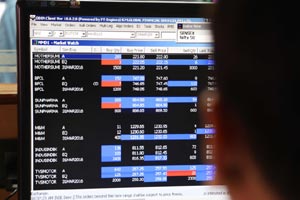In the post budget rally, domestic benchmark BSE Sensex spurted over 1,600 points, or 7 per cent in the past five trading sessions. However, the 30-share index is still trading 4,185 points down from the level it were one year ago. In the past one year, Sensex fell from 28,844.78 levels on March 9, 2015 to 24,659.23 on March 8, 2016. Despite the rally, market experts are still not bullish on Indian equity markets.
Credit Suisse downgraded Indian shares to “underweight” from “overweight” and termed it a “profoundly contrarian” call. The global financial services company said India will experience “modest deterioration” in external position and added that valuations are at “unjustifiable” premiums, while earnings revisions are most negative across emerging markets.
Foreign institutional investors which offloaded shares worth of Rs 28,584.91 crore in the past one year till Feb 29 bought shares of Rs 5,013 crore during March 1-8 this year.
Nikhil Kamath, co-founder and director, Zerodha, said “We would recommend investors staying away from commodity and financial stocks in the near future. 7,400 for Nifty remains an important level on the bourses.”
With no major clues in the domestic markets, all are eyes are now on Reserve Bank Governor Raghuram Rajan. Expectation of a rate cut has started building up now as the Finance Minister Arun Jaitley has retained FY17 fiscal deficit target at 3.5 per cent of GDP despite increasing expenditure for rural and infrastructure spending. Also, the necessary condition for a rate cut has been met with fiscal deficit target retained at 3.5 per cent and this is increasing expectations of an inter-meeting rate cut in the market.
Vijay Singhania, founder-director, Trade Smart Online, said, “Apart from rate-cut factors, global clues and a few macro-economic data will dominate the trading sentiments in the coming sessions.”
With inputs from agencies


